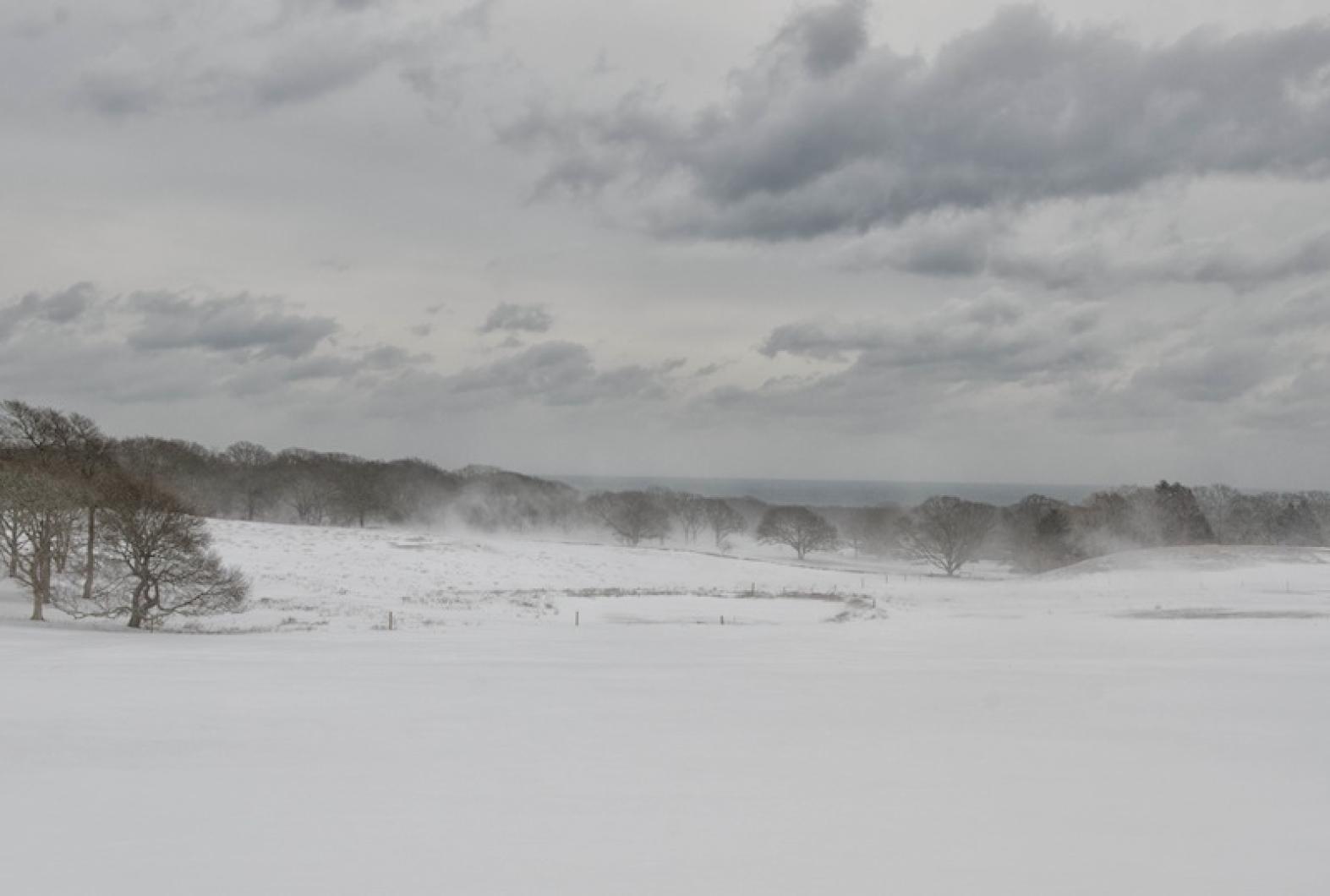“Snowfall will be above normal in most of the Northeast, although below normal in much of New England.” So said the Old Farmer’s Almanac for the start of 2015. It sounds like a cheap fortune cookie message. Also, it sounds quite off the mark. If my language will allow — and when all the swearing has stopped — I believe all 13 words for snow have fallen by now. Mentally, I have attained white-out. It feels like there’s a little guy pacing between my ears waiting for yet another plow. Or a big, hot yellow sun that rolls around heaven all day, and the next day, and the day after that, and the day after that.
My condition, of course, is exacerbated by the sturm und drang that comes with the storm and drear. As the snow piles up, our economy goes south. When transportation and mobility are greatly affected, commerce gets plowed to a halt. We can’t work. We can’t shop. Offices close. Events get postponed or canceled. Schools shut down. Make-up days must now be heading into July. Drifts may resemble Currier & Ives but as of now they do not make a pretty picture.
If there’s any consolation for Vineyarders, it’s that Bostonians have it worse. As historic proportions reached hysteric ones, I had to spend two days in the Boston area. I believe it was right after the blizzard of Feb. 2, that day when normally Punxsutawney Phil comes out of his ground home to check on his shadow. If he had lived in Boston, the only shadow he would have seen would have been cast by a two-story-high mound of what started as white stuff. There appeared to be one of these at every intersection, like some totem out of a sci-fi film. Parked cars were buried through Brookline into Back Bay and the South End. Traffic was down to one lane. And you had to stay in it because there was no place to leave your car.
So things were going along nicely through November and December and most of January. Then on Jan. 27, winter dumped with a vengeance. We’ll remember this one. They say, as I write this, this is the eighth snowiest season ever in these parts. So by the time this column appears, it will probably be the sixth or seventh snowiest.
But then again, we were warned. Ever hear of the Siberian effect or the Arctic oscillation? Turns out this is a better predictor than the Old Farmer’s Almanac. To see what really might happen in the first three months of the new year, you have to note what happens in some special places in September and October of the old year. There were crazy omens galore.
As told by the Washington Post on Oct. 13, 2014, last September was the snowiest on record in North America dating to the late 1960s. That’s right, September. Rapid City, S.D., got its earliest snowfall on record in September. Record cold and snow blasted the Rockies with a week of summer left. Calgary and Alaska got whacked at that time too. And in Siberia in October, the snow was coming in torrents. Scientists looked across the Arctic Circle for possible harbingers of what was heading our way.
Studies have documented a more solid connection between October Siberian snow cover and the coming winter in New England. This was brought to my attention on television two winters ago in a report from Boston’s WCVB meteorologist Harvey Leonard. The studies show that when Siberian snow cover mounts rapidly in October, it provides a strong signal that a weather pattern known as the Arctic oscillation (AO) will tend towards its negative phase during our winter months. When the AO is negative, frigid air spills south from the Arctic and temperatures usually run colder than average over eastern North America. And the Northeast gets a heavy sample of the snows that visited Siberia.
Not much we can do about it, except maybe pay attention in the fall and decide if it’s time to leave the area for the entire winter. That costs money. Then again, so would ripping up all our roads and investing in a version of radiant heat. Today many regions enjoy the benefits of geothermal district heating — snow melting and de-icing on a municipal scale. In downtown Reykjavik, a snow-melting system has been installed under the sidewalks, parking lots and streets. Reykjavik, by the way, is the same size as the Vineyard. Then again, Icelanders pay at least 40 per cent of their income in taxes.
Oh, well, as cabin fever turns into a cottage industry, we remain indoors, power on, food in the fridge, wine and beer galore, fire in the hearth, listening to the latest Tony Bennett album (Duets with Honey Boo Boo?). When will this ever end? Passover is April 3. At that time, will there be snow falling on seders?
Arnie Reisman and his wife, Paula Lyons, regularly appear on the weekly NPR comedy quiz show, Says You! He also writes for the Huffington Post.




Comments (1)
Comments
Comment policy »